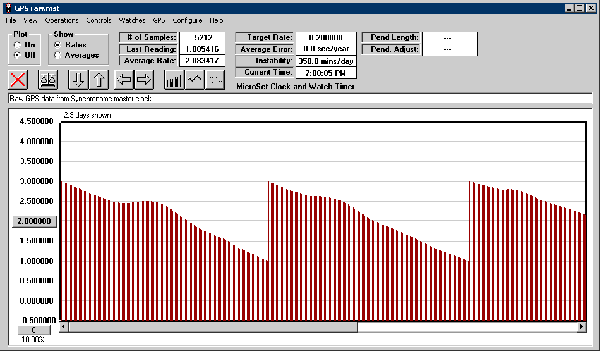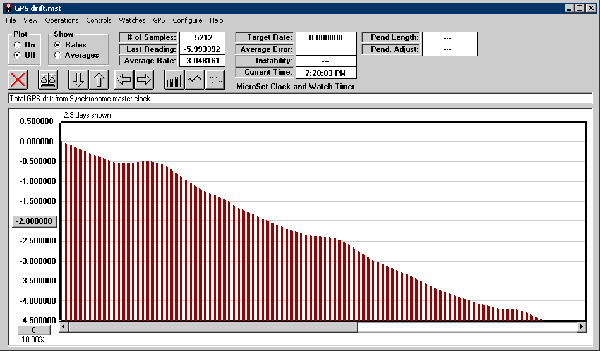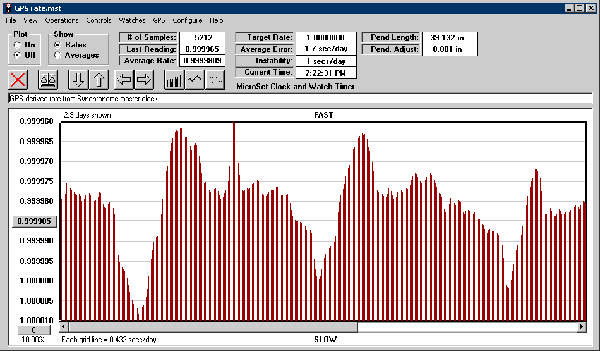|
Measuring Clocks and Watches
Measuring clocks with GPS The way we measure a precision clock with a rubidium or GPS reference signal is to measure the time between a reference pulse and the next beat of the clock. If the clock is slow, this time interval will gradually get longer. If the clock is fast, the interval will get shorter. These values can be recorded by hand, but it’s better to capture them on a personal computer. The following graph shows typical readings made with a GPS reference receiver. Each vertical line represents the time between a GPS reference pulse and the next beat of a Synchronome master clock. The taller the line is, the longer the time interval. This clock is running fast, so the time interval gets shorter until the two signals coincide. When this happens, the timer begins to measure to the NEXT beat of the clock and the interval appears to jump by two seconds. (The jump is two seconds instead of one because the sensor is arranged to produce a signal from the clock after every two beats.) The computer can detect and remove these two second jumps by subtracting two seconds from the readings after each jump. The following graph shows the same data as the previous one, but with the jumps removed to show the total accumulated drift of the clock over time. This graph represents three days of readings, and shows that the clock gained four and a half seconds over this time. The computer can also calculate the average beat time of the clock from the GPS data. The following graph shows the average beat time of the Synchronome clock over the three days. You can clearly see a daily oscillation in the rate, which is evidently caused by temperature fluctuations. The low points occur at 7 AM, just before the furnace turned on. In other words, this clock is overcompensated for temperature. It runs slower in cold air.
---- Page 6 ----
|


